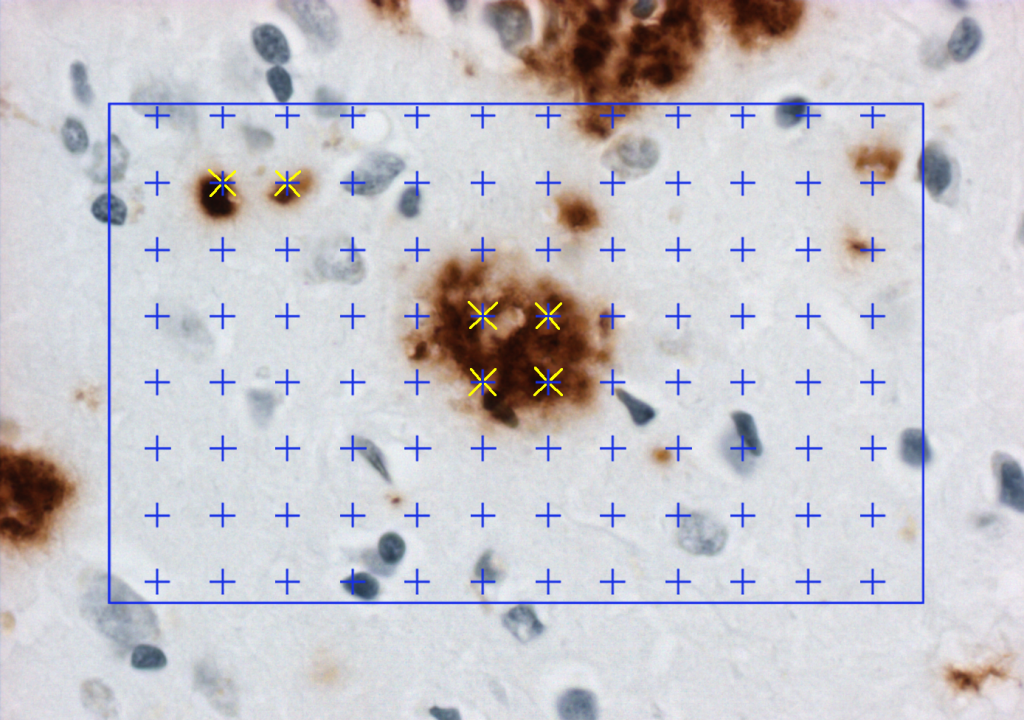
Cells and fibers in tissue are distributed in three-dimensional space and any given section through the tissue will capture only parts of the cell. This is in contrast to the traditional histological studies that simply counted cells observed in the microscope field without allowance for the spatial organization of these cells with respect to the histological section in which they were embedded. Modern design-based stereology has as its foundation the principle that any object within the tissue should have an equal probability of being counted. For cases where only a subset of the structure is the focus of study, such as the dorsolateral quadrant of the striatum for example, the region of interest can be defined to include just that region, provided sufficient objective landmarks can be used to make such a definition. All of these considerations are avoided by stereological sampling where sections through the entire structure provide the basis for the quantitative estimate.

If there were organizational or parametric changes that displaced or altered nuclear arrangement, these may bias the assumption that the centers were equivalent samples. For example, the traditional approach of examining only sections through the middle of the substantia nigra for comparison has, at its core basis, validity only for the middle of that nucleus. As a result of the required comprehensive sampling necessary for a stereological study, the outcome measures can be known to apply to the entire structure with assurance. The quantitative resolution that stereology provides may permit conclusions to be drawn from such studies.

Stereology is especially important for intervention studies where it becomes necessary to evaluate if the experimental manipulation can produce improvement in cell survival or outgrowth beyond the extent of spontaneous recovery.

Furthermore, they can be used in conjunction with quantitative values obtained from protein, molecular, or behavioral studies to explore relationships and potential correlations. Careful quantitative outcomes from these studies can provide far more information than qualitative or semiquantitative descriptions alone. This new design-based stereology has almost completely replaced the use of the older geometric model-based stereology in most biological research applications.įor studies of movement disorders, stereology can readily be applied to document pathological changes or loss of cells or innervation in experimental injury models. A major advance came in the mid-1980s when a number of papers established that it was possible to design conceptual probes to independently sample tissue, rather than relying upon geometric models of tissue structures themselves. While it has been applied to physical sciences and geology since the nineteenth century, the use of stereology in the biological sciences only began in the last half of the twentieth century. The concepts related to stereological sampling have their roots in the mathematics of geometric probability that extend back to the Golden Age of Greece. Stereology can often be applied to in vitro studies to improve sampling validity for quantitative parameters.

As changes of physiologically relevant ranges within tissue are often far below a fold difference, stereology provides a powerful analytical tool for in vivo histological studies. When appropriately applied, stereology can allow for reliable detection of differences only slightly greater than interanimal variation, that is, on the order of 15–20% differences between mean values. By using appropriate sampling procedures and applying counting or measuring protocols (known as probes), stereology makes it possible to avoid potential artifacts and errors that could significantly skew results. Obtaining accurate estimates is a critical component of producing a study outcome with statistical validity. Stereology is the process of sampling and counting material using specific protocols to obtain an estimate of a quantitative parameter, such as number, length, volume, etc. Peterson, in Encyclopedia of Movement Disorders, 2010 Definition and History


 0 kommentar(er)
0 kommentar(er)
